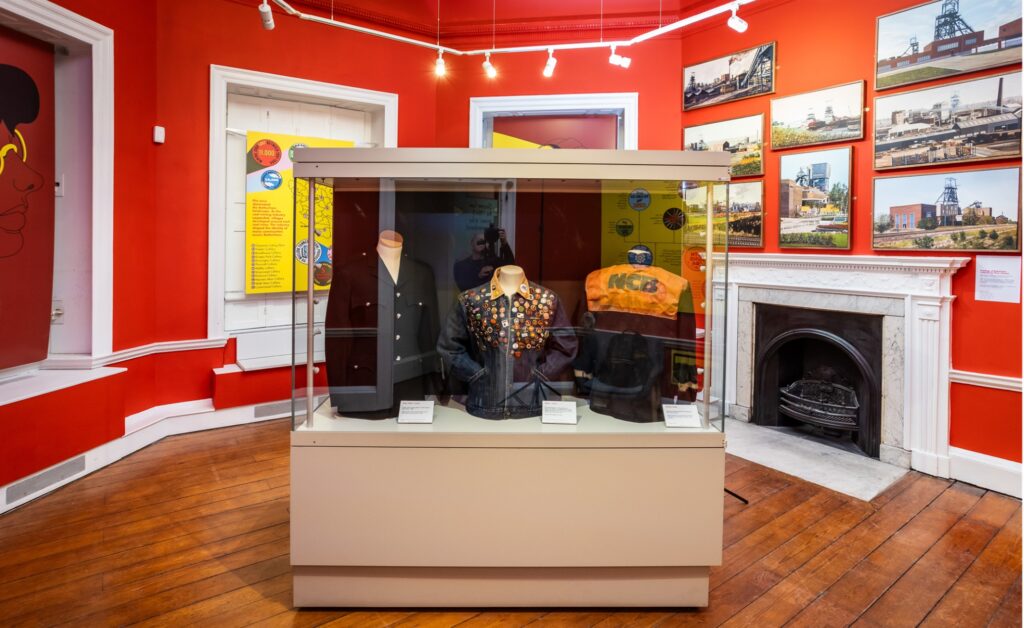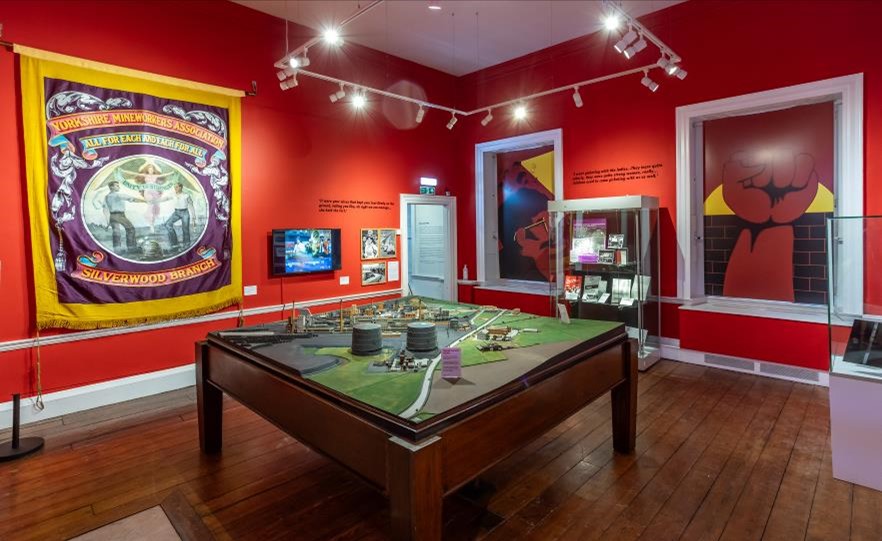The 1984/85 Miners’ Strike was a year like no other. A dispute that ripped the industrial heart out of Rotherham and the wider Yorkshire region.
To coincide with the 40th anniversary of the strike, a new exhibition at Clifton Park Museum explores the year of the strike across the Rotherham borough in ‘Days of Laughter, Days of Pain’.
The exhibition looks at the resilience, camaraderie and force of the strike in a way that hasn’t been sanitised or toned down for modern audiences. As in the title of the exhibition, there were days of laughter, of communities pulling together, but there was also such sorrow as families struggled and miners made the choice to stay out on strike or return to work.

For those who lived through the strike, its enormity cannot be underestimated. For many people in Rotherham, this is living history. There can be potential to upset or to offend those on all sides of the dispute. But the team at Rotherham Museums, Arts and Heritage have struck the right balance.
The exhibition space flows from mobilising the pickets and police in the spring and summer months, through to the solidarity of communities as the strike entered the hardship in autumn and winter. It highlights some of the most poignant moments from the strike while illustrating the quieter ways in which people came together, particularly at Christmas time.
Exhibition curator, Tessa Chynoweth, says the exhibition focuses on the stories of those who are finally ready to tell them 40 years on.
“It was emotional collating all the memories and audio used in the exhibition as so many of these people’s stories have never been told. It might be the last anniversary that so many striking miners are around. It’s also been interesting to hear those conversations between generations as stories are retold.”
Voices of former miners sound out throughout the rooms, coupled with memorabilia, ephemera and personal items such as posters, clothing, badges, diaries, and Christmas cards. There’s a pit banner from Silverwood Colliery, a model of Orgreave Coking Plant that has been restored, a leger citing donations received for Wath miners, and a miner’s locker door from Kiveton Park Colliery.
Giving weight to the other side of the divide is a police shield and helmet loaned from the Emergency Services Museum.

Most of the items on display are from the museum and archives’ own collection, some of which has been catalogued for the first time. Visitors to the archives will now be able to request the material once the exhibition has finished in July.
It’s also the first time that the stories of Rotherham’s 11 collieries have been brought together, rather than disparate. Artwork created by Lisa O’Hara shows the timeline of events in the borough and some key statistics for Rotherham’s mining industry. The exhibition also includes prints of Peter Watson’s colliery paintings commissioned by the NCB as the pits were closing.
Film and audio play a big part of the exhibition, helping visitors who didn’t experience the strike resonate with what people went through. There’s footage from the May Day rally in Rotherham town centre, as well as Jeremy Deller’s 2001 film ‘The Battle of Orgreave’, a re-enactment of the brutal confrontation told as accurate as possible.
The final room depicts the mass march back to work in March 1985, 362 days after the strike began. The pride of the mining community is evident, mixed with the bittersweet emotions of what was to come: the closure of ten out of 11 pits within the next ten years.
The strike fuelled a rise in creativity, with miners taking photographs, keeping diaries, creating music or depicting their experience in art. Inspired by this, the museum team is running a free art workshop on Tuesday 2nd April for families to take part in. Join artist and sculptor Daniel Jones to create your own Badge of Protest, making moulds from clay and inlaying bright colours into your designs. The 90-minute sessions are at 10.30am and 1pm and are bookable via Eventbrite.






